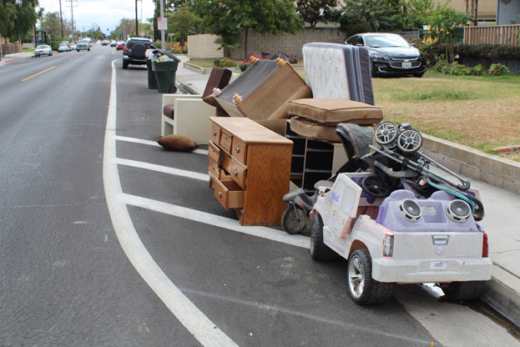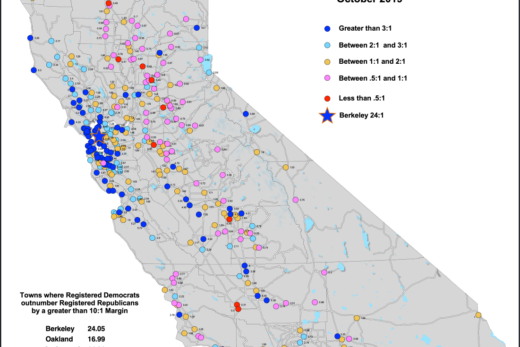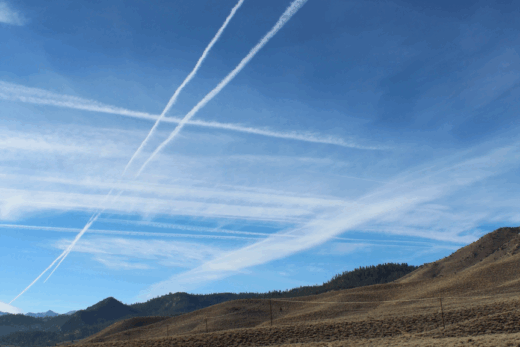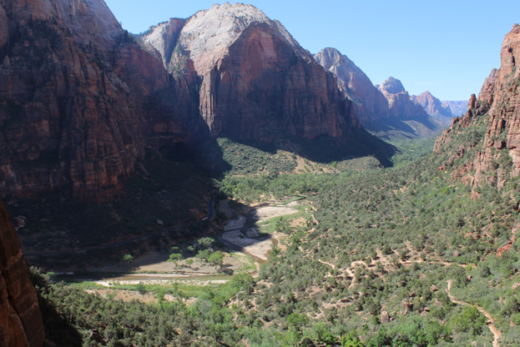Our previous field trip around Humboldt Bay focused on the internal or endogenic (tectonic) processes that are building initial landscapes in northwest California. Here, we turn our attention to the external or exogenic processes that shape sequential landscapes. These denudational processes include mass movement and the work of running water to erode, transport, and deposit sediment as it is weathered.
Since mountain building and degradation are always occurring simultaneously, recent tectonic activity in this region has uplifted and exposed tremendous rock masses that will be transported to the sea from these mainly youthful, steep, high-energy environments. Geomorphology, biogeography, hydrology, and human impacts are the highlights of this field trip, Landslides, Floods, and Sediment, championed by Andre Lehre, Department of Geology, Humboldt State University, and sponsored by the California Geographical Society in the spring of 2015.

We start at the Salt River, where it struggles past Ferndale through the rich floodplain of the Eel River located south of Humboldt Bay. For centuries here, the Salt meandered toward the Eel, where their waters were finally discharged into the ocean. But in recent decades, accelerated upstream erosion, subsidence, and reduced stream gradients have choked the Salt River with sediment, up to 54 inches of filling within 11 years. Increased sediment yield comes from fresh material exposed on surrounding slopes by recent earthquakes and short-sided land use management that included past logging, agriculture, and other development in the watershed.
Though this Salt River channel has nearly disappeared, frequent flooding and pooling has earned it labels such as “a lot of volume but no velocity” and “tricky hydrology”. That is why scientists and engineers have developed and begun implementing a massive restoration plan for the estuary and river during this century. Folks there are monitoring the progress of this herculean effort (certainly by North Coast standards) that will hopefully restore the fish, ecosystem, and the integrity of the Salt River, while solving the alternating stagnation and flooding problems. As we include two images of this beautiful quagmire, you might consult the most recent updates, starting with the two references we list at the end of this essay.
Next, we take you to the Centerville Beach landslide, named after the nearby town that was already abandoned by 1885. Though the most noticeable part of this slumping debris slide or flow occurred during a wet 1997-98, there is lumpy evidence of ancient slides, and it has shown more recent activity. In the images, note the seeps emerging in the silt and clay sediments of the Rio Dell Formation. In this case, the material is delivered directly to the sea after tectonic activity has lifted it up to 2m (6 feet)/ 1,000 years, very fast uplift in geologic terms. We will now travel inland and upstream to examine how mass wasting is delivering tons of debris into energetic streams and rivers that will then carry the sediment through river valleys and eventually to the sea.
We head south on Hwy 101 toward Humboldt Redwoods State Park to examine streams that flow into the Eel River. Little Cow Creek is an example of a stream closer to equilibrium since its watershed wasn’t heavily impacted by logging. But Bull Creek continues to recover from the mid-1900s clear cutting that devastated these watersheds. An annual tax on the value of standing timber in 1946 coincided with the post WWII building boom to encourage reckless clear cutting and tractor yarding that turned surrounding steep hillsides into skid trails and stream channels into roads. The 1946-1967 logging left devastated hillsides vulnerable to fires, floods, and mass wasting. Violent flooding carried tons of sediment downstream, dramatically widening stream channels that suffered from massive bank erosion and bar formations.
Bull Creek and Cuneo Creek were particularly devastated by the flooding and debris that immediately followed clear cutting of surrounding steep slopes in the 1950s and 1960s. Even the old Bull Creek town site was buried in thick gravel deposits. Cuneo Creek is still recovering from at least 7m (22 ft.) of filling since 1955, as willow and alder return to stream terraces. Meanwhile, nearby Cow Creek and Squaw Creek provide examples of relatively undisturbed watersheds that were not heavily impacted by the logging. Our images illustrate stark contrasts between the accelerated erosion and mass wasting on recklessly logged hillsides versus the relative stability of adjacent less altered watersheds. Perhaps the greatest contrasts can be seen within the oldest redwood forests that are anchored in thick, rich silt, the nurturing alluvium deposited during rare inundating floods from many centuries before humans started logging. Contrast these with images from the steep exposed clear cut slopes such as around Devil’s Elbow Slide lurking above recovering Cuneo Creek.
This field trip demonstrates how natural and human-induced mass wasting and accelerated erosion carry tons of sediment that is deposited into lower elevations in northwest California. When natural succession is interrupted and the landscape falls out of balance, the results can be costly and dangerous devastation that may require decades or even centuries to mend.
Our story is yet another example of how many different disciplines and fields of study must be applied to understand the processes shaping our landscapes, how humans are impacting them, and to solve the many problems that may result from these complex interactions. In this case, we must use our combined knowledge of geology, soils, weather and climate, biogeography, hydrology, and human geography to understand the systems and cycles that are changing northwest California landscapes. You might consult our book to build your foundation of these concepts as they apply to the entire state. Below we list some relevant references if you would like to continue exploring.
We must again thank Andre Lehre, Department of Geology, Humboldt State University, and the California Geographical Society for making this exceptional learning experience possible.
Some references:
- GEOLOGY 700 LANDSLIDES AND FLOODS FIELD TRIP ROAD LOG.
- Salt River restoration gets $1.13 million boost
- The 2008 Salt River Ecosystem Restoration Project report
- Geology 700: Landslides & Floods in Humboldt County
- Geology of the Humboldt Bay Area
- From Rivers to Landslides: Charting the Slopes of Sediment Transport






